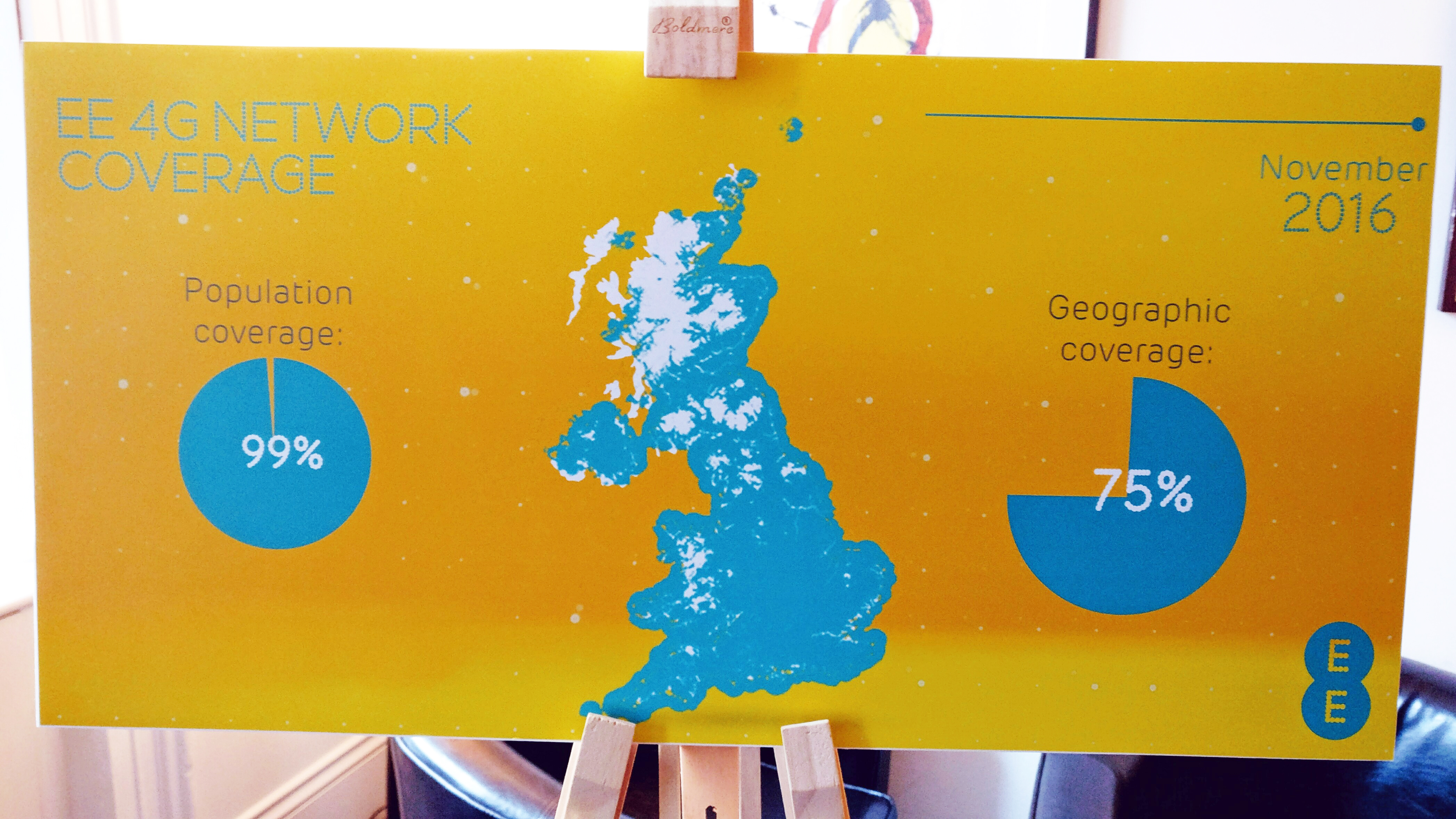EE would rather you didn’t notice its 99% 4G population coverage

Mobile phone network EE has revealed its superfast 4G network now covers 99% of the UK population, but it would rather tell you that it now accounts for 75% of the geographic land mass of the United Kingdom.
The UK’s largest network is calling on the rest of the industry to ditch the population coverage metric in favour for geographic coverage, with regular updates on network speeds and quality at a county level.
EE’s CEO Mark Allera said: “As an industry we’ve done some amazing things, in this country we have some of the best mobile networks in the world, but we’ve set an incorrect expectation using a metric [population] which over-inflates our coverage.”
It's not really a surprise that EE is pushing the geographic metric, as it has the biggest network coverage. Stats of rival network’s geographic coverage haven’t been revealed, but we have contacted them to find out.
95% by 2020
EE says it will have 92% geographic coverage by November 2017, but it'll take until 2020 to up that to 95%.
After that, "what’s left is the really, really hard 5% – places where customers hardly ever go, such as the Outer Hebrides" Allera explained.
"We’ve been using drones, balloons and satellites to see how we can cover that final 5%", but for now the focus is on hitting 95%.
Sign up for breaking news, reviews, opinion, top tech deals, and more.
This 4G infrastructure will also form the foundations for EE's 5G coverage, but there will still be a lot to do to roll out the next-generation network.
By 2020 EE expects to have around 19,000 masts, but for full 5G coverage it'll need to up that number to around 50,000. It's a process which is costly, and will take a little time – so 5G may take a while to filter down to our smartphones.
EE also wants to highlight the smartphones which can take advantage of extra speeds and network spectrum – handsets such as the Galaxy S7 and iPhone 7 – so that customers are aware which devices are capable of receiving better coverage.

TechRadar's former Global Managing Editor, John has been a technology journalist for more than a decade, and over the years has built up a vast knowledge of the tech industry. He’s interviewed CEOs from some of the world’s biggest tech firms, visited their HQs, and appeared on live TV and radio, including Sky News, BBC News, BBC World News, Al Jazeera, LBC, and BBC Radio 4.